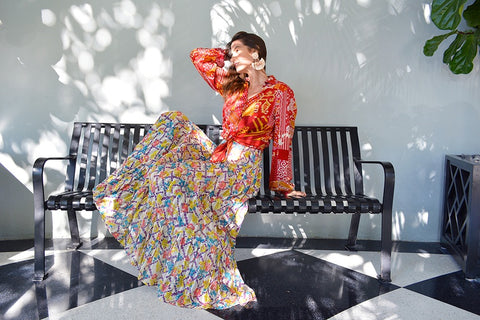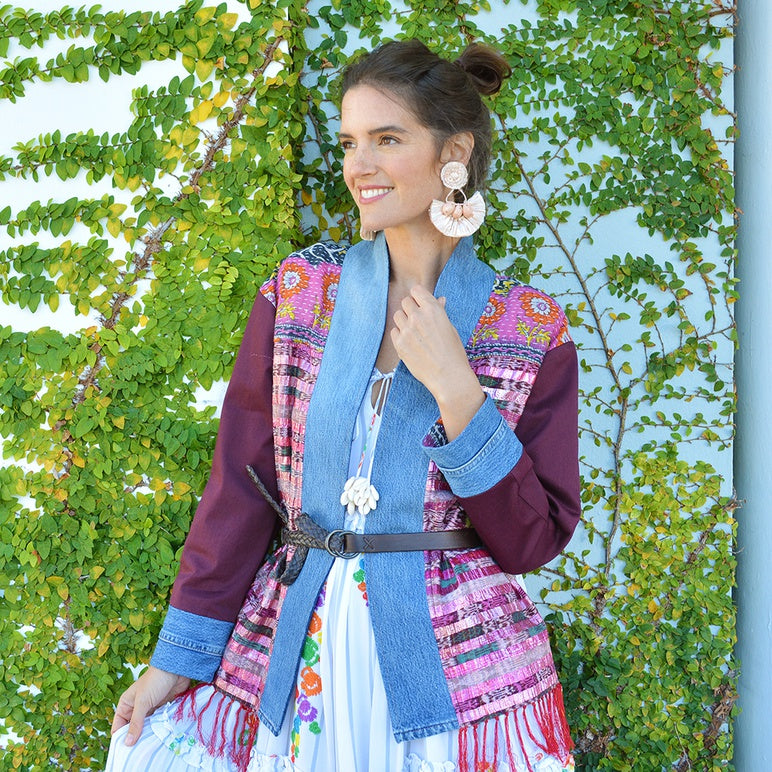The garment industry is one of the most polluting. Clothes makers and consumers have begun to join the call for a more sustainable industry
What comes to mind when you think about fashion?
We’d be willing to bet that your answer isn’t greenhouse gas emissions. That is unless you are heavily involved in climate change initiatives. But, what if we were to tell you that the fashion industry and climate change had a troubling correlation to one another? Would you be surprised? More so, what if we told you that the process of manufacturing just one pair of jeans emits the same amount of greenhouse gases as driving a car for almost 70 miles? Do we have your attention now? Good.

These days, it’s no secret - climate change is a massive threat to our planet. It is quite possibly the single greatest threat that humankind has ever faced. So, it goes without saying, we need to do something about it, and we need to do it fast. If not, our planet and life as we know it will quickly change for the worse.
We’re not sharing this to frighten you, but to make you aware of a lesser-known facet of a well-known issue: The fashion industry is a major contributor to climate change. Right now, it is absolutely critical that all major industries analyze their operations and identify new ways for sustainability. It is the duty of every corporation, regardless of size, to put into practice more sustainable production processes in order to cut emissions that are harmful to the environment.
Because of who we are and what we’re about at Farm Stand, we’d like to look at the fashion industry specifically. Exactly how much does it contribute to climate change? Is anyone doing anything about this growing threat? And is there any hope for the industry to create a standard of sustainable fashion?

Fashion vs. Climate Change
Fashion is all about setting trends. Coincidental, when you consider the fact that the industry as a whole has, for the most part, ignored one of the largest trends of all time - climate change. But, why? Because in today’s world, fast fashion is the name of the game, and the industry has fallen to the perceived need for consumer demand. Meeting that need means forsaking the good of the planet in order to meet the desires of the people.
Producing apparel is immensely unsustainable, and there is an abundance of research and data to prove it. In a study from the World Wide Fund for Nature, research showed that in order to produce just one cotton shirt, more than 700 gallons of water are needed. The data for denim production isn’t much better. As mentioned above, the process of manufacturing just one pair of jeans emits the same amount of greenhouse gases as driving a car for almost 70 miles, according to a study conducted by Levi Strauss. Think about it. How many pairs of jeans do you own? How about cotton shirts? When you think about just how many people have a closet that looks similar to yours, it makes sense that the fashion industry is responsible for nearly 10% of global greenhouse gas emissions.

How Much Do Our Wardrobes Cost The Environment?
Unfortunately, the problem doesn’t end with the emission of carbon dioxide. Once your clothes have been worn and used, they often times end up in a landfill. For clothing made out of non-biodegradable material, they can sit in the ground for centuries, adding to the growing amount of landfill waste. Landfills are another considerable contributor to global climate change.
Heard enough? Well, the impact that the fashion industry has on the environment reaches further still. Landfills aren’t the only place that collect unwanted garments. The inconvenient truth is, it effects our oceans too. Clothing made from polyester can release hundreds of thousands of microfibers into the environment. Polyester is a type of plastic, meaning it is non-biodegradable. So, when these microfibers make their way into our waterways, and eventually the oceans, they can seriously damage our subterranean ecosystems including fish, turtles, reefs, and other marine life.
What Can We Do?
Okay, enough of the grim realities. Time to answer the question that we’re sure you’re asking yourself. What can the fashion industry do to address the issues and reduce its effect on the environment? We’re glad you asked.
Before we get straight into the solution, let’s discuss why the problem is growing so rapidly. We mentioned above that fast fashion is the name of the game, but what does that mean? According to research, one of the primary reasons for the growing problem is simply the number of new collections that are released every single year. Back in the early 2000s, on average, fashion companies only released 2 new collections a year. Now, some companies are releasing up to 24 new collections every single year. Seriously.
It’s become the opinion of many that fashion is disposable, but as we have clearly shown above, that is not the case. For that reason, it is up to the fashion companies themselves to change the perceptions of their customers. The fast fashion mentality creates a culture among consumers that, in order to stay with the trends of the time, they need to constantly be updating their wardrobes. The only way to correct this is for fashion companies to take responsibility by creating a new culture of sustainable fashion. One that uses less water, reduces production, uses environmentally friendly materials, and reuses discarded materials.
There is a silver lining to this dark cloud, however. Many companies have implemented guidelines to improve upon the things that we’ve listed above. Additionally, there are a select few out there who have come up with even more resourceful ways of creating sustainable fashion.

Who is Joey Wolffer?
Joey Wölffer is a genuinely unique retailer in Sag Harbor, NY. Her specialty? Limited luxe jewelry, clothing, and accessories for women. The boutique is quite literally a treasure trove of unique pieces by hard to find designers blended with vintage finds from around the world in addition to Joey Wölffer’s own creations.

In pursuit of a career in fashion Joey Wölffer debuted The Styleliner, a luxury accessories boutique on wheels, back in 2010. The mobile boutique quickly became Joey Wölffer, her eponymous line of clothing shops around the United States. All of Joey’s shops feature an assortment of one of a kind jewelry and clothing, inspired by her creative spirit.
Being the environmentally-conscious person that she is, Joey saw a need to meet the demands of sustainable fashion. With that, she took to the practice of upcycling - the process of transforming by-products, waste materials, useless, or unwanted products, into new materials or products - and created a stunning new line of ecofriendly clothing aptly named JW Reworked.

Saving the Environment Through JW Reworked
JW Reworked is a collection of truly unique womenswear. The one-of-a-kind pieces take materials that would otherwise go unused and reimagines them into something distinctly new and beautiful. The collection marries the eclectic artistry that Wölffer has become known for with the ecofriendly practice of upcycling. When asked about why she decided to produce such a line, Joey had this to say, “At this moment in time, we at Joey Wölffer believe that repurposing materials is of utmost importance, in the fashion industry and in the world. Upcycling allows us to engage in sustainability, promote creativity and stimulate the economy by maintaining relationships with our valued manufacturers, both big and small.”
JW Reworked utilizes upcycled, excess materials from their inventory in combination with unique fabrics that Joey has found during her travels all over the world - resulting in an authentically bespoke line of tops, dresses, jackets, and vests that make up this line of truly sustainable fashion.
Some images in this post were pulled from Joeywolffer.com

